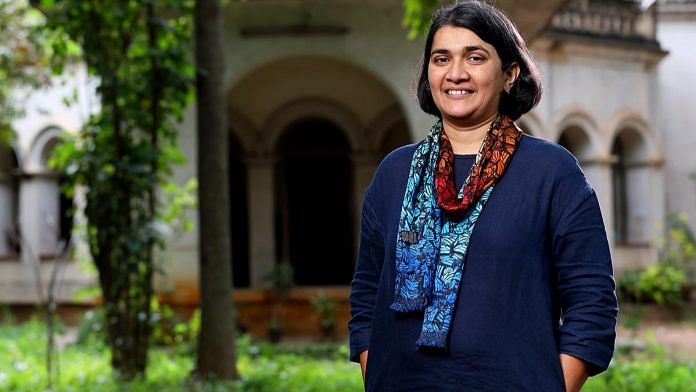Bengaluru: The Infosys Prize 2023 in Humanities was awarded to Dr Jahnavi Phalkey, historian of science and archivist, for her work in placing the history of Indian science and nuclear programme in a postcolonial context.
A statement on her work, available on the Infosys Prize website says “her book The Atomic State (Permanent Black, 2013) and many articles insightfully braid the global history of science, especially nuclear science, with the anthropology of the postcolonial state to illuminate rich and textured histories of the everyday lives of science in India”.
She is the founding director of Science Gallery Bengaluru, the official centre of which is to be opened on 19 January.
While the names of the 2023 winners in six categories were announced in November, The Infosys Science Foundation (ISF) felicitated the awardees Saturday at a ceremony in Bengaluru.
ThePrint caught up with Dr Phalkey on the significance of her work.
Also read: India’s clean energy future depends on rapid growth of its nuclear power: Anil Kakodkar
Q: What part of your work won the Infosys Prize and what is its significance?
A: Nuclear science anywhere is a complex mix of science, politics, and the state, just like Manhattan Project [a project undertaken during second World War to produce the first nuclear weapons]. What that meant after the Second World War was that the scale changed completely — nuclear physics was no longer possible in the university setting because it it has become so massive and so expensive.
In India, the state was also just forming at the same time, so there’s this period where research becomes deeply embedded in the sovereign Indian state.
This [her work] helped understand how the state is supposed to support and organise research. There was no way to separate politics from institutional history, and I think that is what appealed to the jurors. In this context, they are so intricately woven together for nuclear physics and became a DNA edit to the making of the Indian state.
The book I wrote in 2013, The Atomic State, allowed me to kind of answer precise questions about the beginnings of experimental nuclear physics in India, and at the same time credibly speak about the state of Indian politics and how research was organised on a national scale.
Q: What are the key insights from your work and how can they be applied?
A: Science is a social enterprise and science is a political enterprise. There is no way t o separate the two, and anything that happens outside the walls of an institution affects what happens inside. So it is very important to contextualise funding for science and how we might actually organise ambitions in their proper context. Whether we like it or not we are a resource kit as a country, and state priority insights play a big role in organising research.
For universities and taking research outside of universities or into national facilities, it means that university departments with research funding need to be established to the point where they are no longer in a situation to not be able to latch on to new research.
We have universities here that have produced multiple Nobel laureates and there is no commemoration, and we don’t see the story of how resources shaped the institution. So we can often get distant from our own histories. These historical insights are needed for course corrections and highlight the processes of knowledge making in their right context.
Q: What is your background and the context for your work?
A: I have been working in the history of science for almost 23 years now. It did come to me quite serendipitously. My first three degrees were in civics and politics, from Bombay and London. I then did a PhD programme in political sociology, but I was not very happy with what I was doing. So I explored alternatives, and got admitted to Georgia Tech’s [Georgia Institute of Technology, US] History of Science programme.
Facilities on the Georgia Tech campus were nothing like I’d ever seen before, and I am still fascinated the same way with science and research. I wrote about the history and beginning of nuclear physics, then history of aerodynamics, and now next, history of statistics.
I run the Science Gallery Bengaluru to bring the history of science into my work as well.
Q: What is next for you apart from Science Gallery Bengaluru?
A: Science Gallery Bengaluru is opening on the 19 January, so it is a big moment for me. As a historian, this converges with the award I’ve won and I’m deeply humbled and also appreciate it. We’ve brought insights form the history of science into the making of the gallery.
I have a book that I have been editing for the last several years on government and science in India, and I hope to send it off to the publishers soon. It is about the bureaucratic procedures Indian science was subject to in the 1960s.
I am also hoping to write a book about the history of statistics, and the Mahalanobis distance.
(Interview edited for clarity)
Also read: Kakrapar’s 2nd indigenous 700 MW nuclear reactor has attained first criticality. What this means



